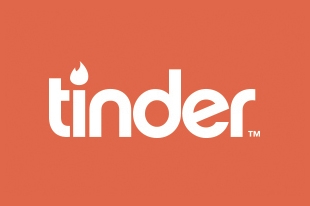The way we date has changed dramatically with the rise of online dating platforms, and Tinder is at the forefront of this revolution.
As we navigate the complex world of modern relationships, it’s essential to understand the impact of social media trends on our love lives. The swipe culture has become a norm, and online dating culture is now a significant part of our society.
This shift has sparked a mix of emotions, from excitement to apprehension. As we explore the world of Tinder and its effects on dating, we’ll examine the benefits and drawbacks of this new landscape.
The Rise of Swipe Culture (200-250 words)
The rise of dating apps has revolutionized the way people connect, with Tinder at the forefront of this change. Tinder’s innovative approach has significantly impacted the dating app landscape. By introducing the swipe feature, Tinder simplified the process of connecting with potential matches, making it easier for users to navigate through profiles.
Tinder’s impact on dating apps cannot be overstated. It shifted the focus from online profiles to real-life connections, making dating more accessible and less intimidating. The app’s design, centered around the swipe feature, has been particularly influential, changing how people meet and interact.
The demographics of Tinder users have evolved significantly since its inception. Initially seen as a platform platform for hookups, it has grown to include a broader demographic.
Tinder’s user base is predominantly composed of younger generations, with a significant proportion being Millennials and Gen Z. These age groups have grown up with dating apps and view them view them as a normal part of the dating process.
Tinder’s adoption and usage vary geographically and culturally. Urban areas tend to have a higher adoption rate compared to rural areas. Cultural attitudes towards dating and technology also play a significant role in how Tinder is used across different regions in the US.
In conclusion, Tinder has not only changed the dating landscape but has also become a cultural phenomenon, reflecting and influencing societal attitudes towards dating and relationships.
The Psychology Behind Instant Gratification
The psychology behind dating apps is complex, involving instant gratification and the dopamine loop.
This phenomenon is not just about the technology itself, but how it interacts with human psychology, influencing our behaviors and emotions in profound ways.

Understanding the Swipe
The swipe feature on dating apps is designed to be highly engaging, making it easy to browse through numerous profiles quickly.
This mechanism taps into our natural tendency to make rapid judgments based on visual cues, which can lead to a reliance on superficial characteristics rather than deeper connections.
Decision-Making and Visual-First Attraction Patterns
Research has shown that our brains are wired to respond to visual stimuli, making the swipe feature particularly effective at capturing our attention.
However, this can also lead to a culture of instant gratification, where users prioritize quick matches over meaningful interactions.
The Dopamine Loop in Dating Apps
Dating apps are designed to activate the brain’s reward system, releasing dopamine with each match or message received.
This creates a cycle of anticipation and satisfaction, encouraging users to continue swiping in hopes of experiencing that next dopamine hit.
Notification Addiction and Its Impact on Mental Health
The constant stream of notifications can lead to addiction, as users feel compelled to check their apps frequently.
This can have negative impacts on mental health, including increased stress and anxiety, as users become increasingly dependent on the instant gratification provided by the apps.
Changing Relationship Dynamics
The rise of online dating has revolutionized the way people form connections, shifting the dynamics of relationships in the digital age. This transformation is largely driven by the proliferation of dating apps. Which have made it easier for individuals to meet potential partners.
From Traditional Courtship to Algorithm-Driven Matching
The traditional methods of meeting a partner, such as through social events or mutual friends, have been supplemented by online platforms that use complex algorithms to match individuals based on their preferences and behaviors. This shift from traditional courtship to algorithm-driven matching has significant implications for the nature of relationships. On one hand, it allows for a greater pool of potential partners and can facilitate connections that might not have been made otherwise. On the other hand, it raises questions about the role of technology in mediating personal relationships.
The Paradox of Choice in Online Dating
The abundance of potential partners available through online dating platforms can lead to a paradox of choice. Where individuals struggle to make a decision due to the overwhelming number of options. This can result in a ‘grass is greener’ mentality, where individuals constantly question their choices and wonder if they have missed out on someone better. Furthermore, the ease of ghosting or abruptly ending a connection can exacerbate this issue. Leaving partners uncertain about the status of their relationship.
The dynamics of online relationships also involve a delicate balance between technology use and personal interaction. While technology can facilitate initial connections. It is the quality of these interactions that determines the longevity of a relationship. As such, understanding the impact of digital communication on relationship dynamics is crucial in navigating the modern dating landscape.
The Social Impact of Tinder on American Dating
Tinder has changed the way Americans date, influencing not only how people meet but also how they interact and form relationships.
The Evolution of Dating App Etiquette
The rise of dating apps has led to new norms and expectations in online interactions. Ghosting, breadcrumbing, and other behaviors have become common. Altering the way people communicate and connect.
| Behavior | Description | Impact |
|---|---|---|
| Ghosting | Ceasing all communication without explanation | Leaves the other person confused and hurt |
| Breadcrumbing | Sending flirtatious signals without intending to follow through | Creates false hope and leads to disappointment |

Dating Across Social Boundaries
Tinder has facilitated interactions across different social groups, making people more open to dating outside their usual circles. This shift has led to a more diverse range of relationships.
The impact of Tinder reflects and influences societal attitudes towards dating and relationships. As dating apps continue to evolve. Understanding their effects on our culture and personal lives becomes increasingly important.


